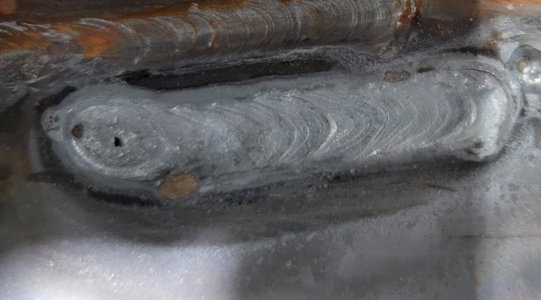- Joined
- Jul 5, 2014
- Messages
- 2,776
The materail is mild steel plate that I bead blasted. Gas is argon. We could hear the gas coming out of the torch, and he said he could feel it when he stepped on the pedal.
I have practiced with no filler rod and it looked a lot better than last night. Actually for the last two times in class it went downhill. And with the woman instructor more interested in chatting I just kept practicing by myself. Last night the reason Nathan came over was I said something to the admin lady. Told her I think it would be a good idea for the instructor to check in with every student at least once per class.
This was my best weld other than the crater at the end. Looks more like wire feed than tig. This was my second night at class. Same materail, same bead blast surface prep.
Then everything went to crap.

I have practiced with no filler rod and it looked a lot better than last night. Actually for the last two times in class it went downhill. And with the woman instructor more interested in chatting I just kept practicing by myself. Last night the reason Nathan came over was I said something to the admin lady. Told her I think it would be a good idea for the instructor to check in with every student at least once per class.
This was my best weld other than the crater at the end. Looks more like wire feed than tig. This was my second night at class. Same materail, same bead blast surface prep.
Then everything went to crap.

Last edited:

